Timbuktu is a fascinating place for birdwatchers. It is a unique region in the Sahel Desert of West Africa and is home to a wide variety of birds.
From the majestic vultures that soar above the city to the colorful rollers that flit around the mud dwellings, there are plenty of species of birds in Timbuktu to observe. The city itself is a great place to watch birds, as well as explore the surrounding desert and wetlands.
With its diverse range of habitats, Timbuktu provides a great opportunity to observe some of the most elusive species in the world. Whether you are an experienced birder or a beginner, a visit to Timbuktu is sure to be a unique and rewarding experience.
1. Columbidae
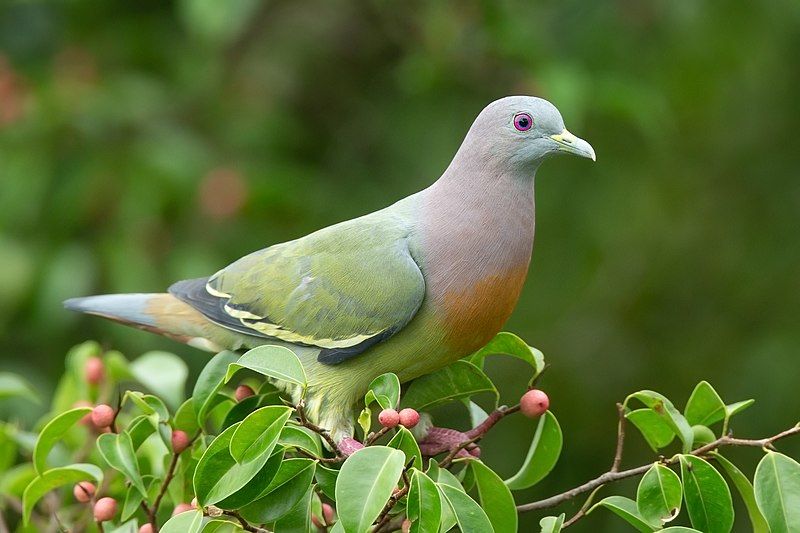
Columbidae is a family of birds that includes both doves and pigeons and is the only family in the order Columbiformes. They are characterized by their stout body, short necks, and short, slender bills.
Some species have fleshy ceres on their bills, which are fleshy outgrowths near the base of the upper bill. These birds typically feed on seeds, fruits, and plants. Their diet consists mainly of seeds, but they may also eat fruits and some vegetation if available.
They are able to adapt to different environments and can find food in a variety of places. Doves and pigeons are found in many parts of the world, from cities to forests and deserts. They are usually very docile and peaceful animals, making them popular pets.
They are also known for their ability to recognize their owners and other people, and for their cooing and other vocalizations. The Columbidae family is a fascinating group of birds that have adapted to a variety of habitats and climates.
They are also an important part of the natural environment, as they help disperse seeds and other plant material. Because of this, they are an important part of the food chain, providing food for other species.
| Kingdom | Animalia |
| Phylum | Chordata |
| Class | Aves |
| Clade | Columbimorphae |
| Order | Columbiformes |
| Family | Columbidae |
2. Rock Pigeon
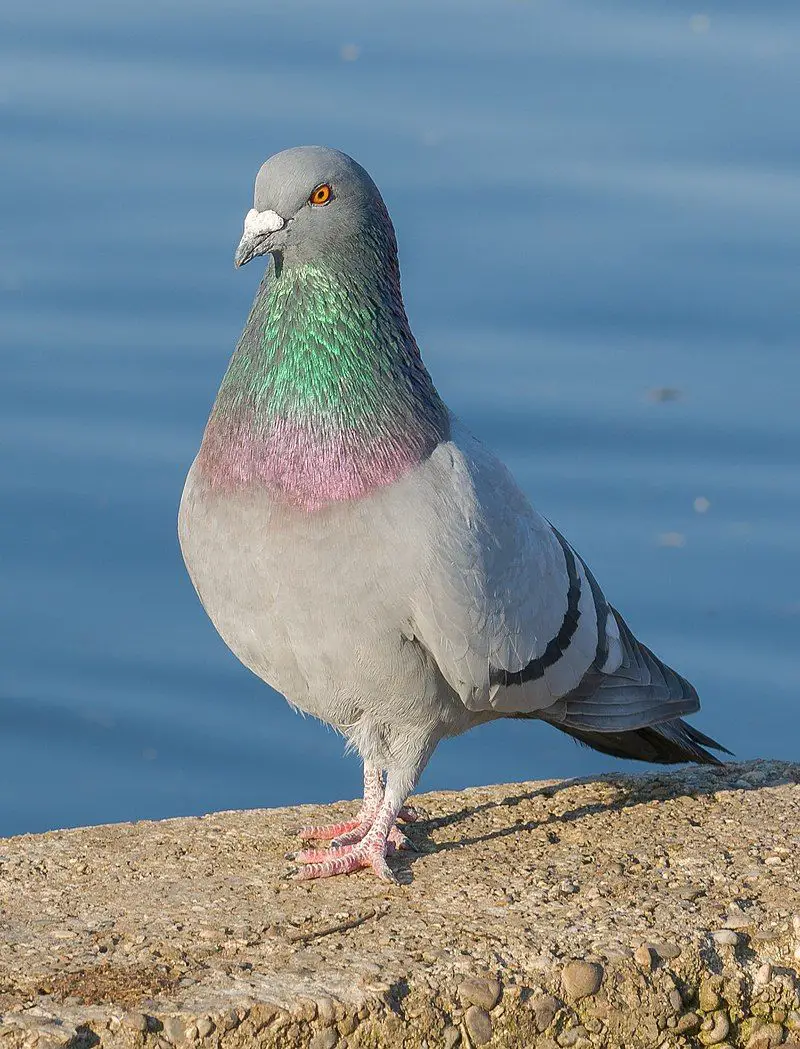
The rock dove, rock pigeon, or common pigeon is a species of bird from the Columbidae family. Commonly known as the “pigeon”, this bird is found in many places around the world.
The domestic pigeon is a descendant of the rock dove, and due to escaped domestic pigeons, the population of feral pigeons has grown significantly. These feral pigeons, which are found in many cities, are actually the descendants of the wild rock dove.
The rock dove has also been domesticated for centuries and is now bred in captivity to create domestic pigeons. This has resulted in a wide variety of colors and patterns among the species.
The rock dove is a versatile species and is able to live in both urban and rural habitats, allowing it to thrive in a variety of environments.
| Kingdom | Animalia |
| Phylum | Chordata |
| Class | Aves |
| Order | Columbiformes |
| Family | Columbidae |
| Genus | Columba |
| Species | C. livia |
3. Black Crowned Crane
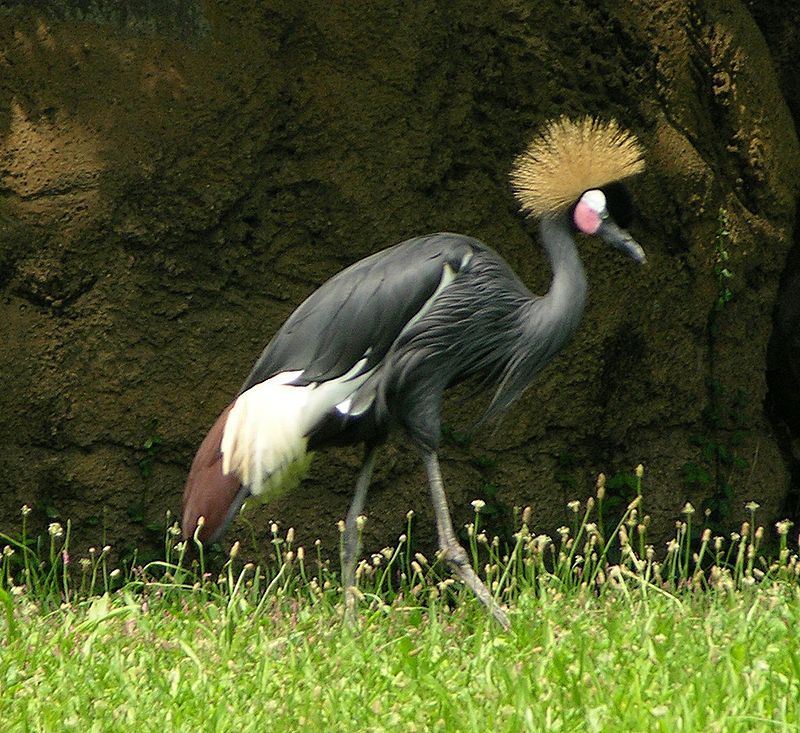
The black-crowned crane is a species of crane found in the family Gruidae. It is a distinct species from its sister species, the grey-crowned crane. This species is known for its unique and beautiful feathers, which top its head in the form of a golden crown.
This crown is composed of bristle-like feathers, which have a distinct look compared to the more common, rounded feathers of other species of crane. The black-crowned crane is a beautiful bird, and its golden crown is an integral part of its appearance.
This crown is not only aesthetically pleasing, but it is also a sign of the bird’s age and status within its flock. The black-crowned crane is a majestic bird, and its bristle-feathered golden crown is an important part of its appearance.
| Kingdom | Animalia |
| Phylum | Chordata |
| Class | Aves |
| Order | Gruiformes |
| Family | Gruidae |
| Genus | Balearica |
| Species | B. pavonina |
4. Grey Heron
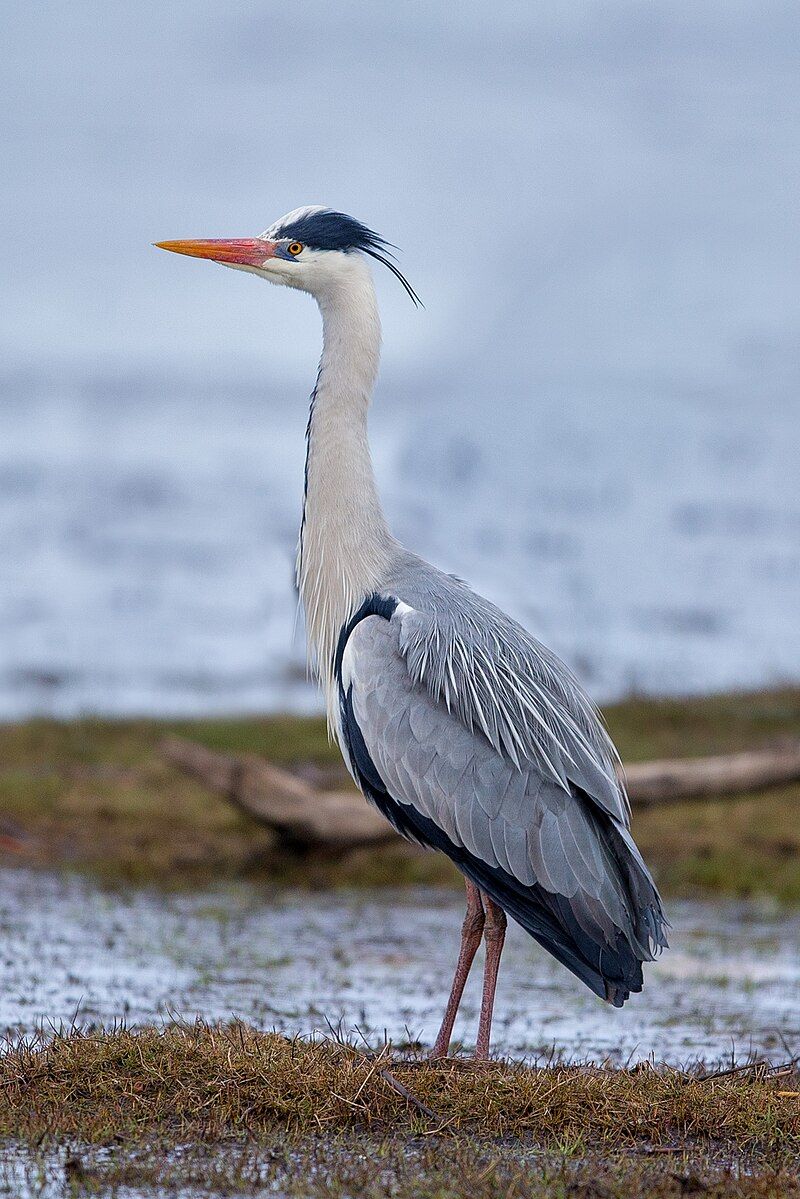
The grey heron is a large, long-legged bird belonging to the family Ardeidae. It is native to temperate regions of Europe, Asia, and Africa. It is found in both rural and urban areas and is typically found wading in shallow waters or standing atop a spot of land.
The grey heron is generally resident in its range, meaning that it does not migrate. However, some populations of the bird in the northern parts of its range migrate southwards during autumn.
This migration is likely due to the colder temperatures in the northern parts of its range. The grey heron is a large, majestic bird that is easily identifiable due to its long legs and grey feathers.
It is a sight to behold in its natural habitat, standing tall and proud as it searches for its prey.
| Kingdom | Animalia |
| Phylum | Chordata |
| Class | Aves |
| Order | Pelecaniformes |
| Family | Ardeidae |
| Genus | Ardea |
| Species | A. cinerea |
5. White-bellied Bustard
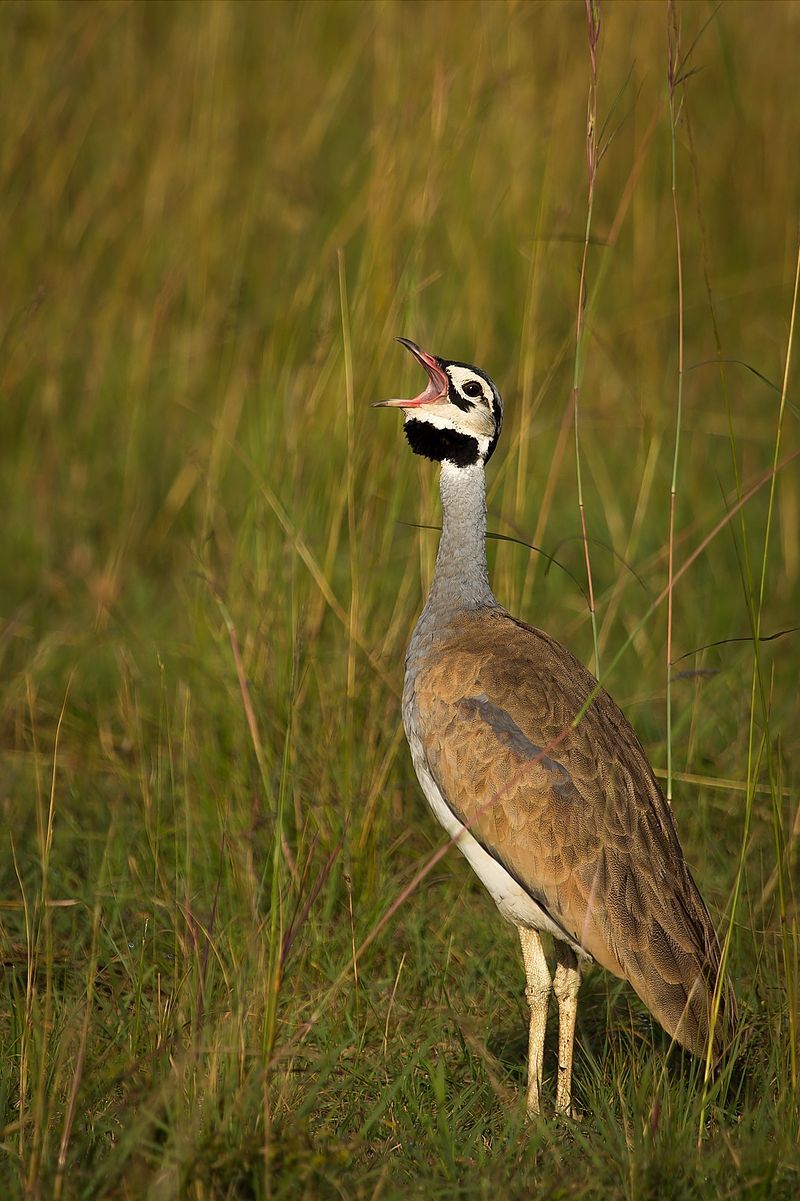
The white-bellied bustard, also known as the white-bellied korhaan, is a species of bustard that is native to Africa. It is found in a variety of habitats including grasslands and open woodlands, and is distributed across much of sub-Saharan Africa.
This bird species is considered to be quite large, with males up to 65 cm in length and weighing up to 2.5 kg. The white-bellied bustard is a terrestrial bird that feeds mainly on seeds and insects.
It is an opportunistic species that can adapt to a variety of habitats, including both grasslands and woodlands. The bird can be found in a variety of habitats, ranging from savannas to semi-arid regions.
The white-bellied bustard is a fairly common species, with a large population size. The white-bellied bustard is a beautifully colored bird, with a white belly and black and white wings.
The male has a black head and a white neck, while the female has a brown head and a white neck. The species is usually seen alone or in small groups and is not considered to be a gregarious species.
The white-bellied bustard has a number of predators, including various raptors, wild cats, and jackals. The species is also threatened by habitat destruction and fragmentation, as well as hunting for sport.
As such, the white-bellied bustard is listed as Near Threatened by the IUCN and is in need of protection and conservation efforts.
| Kingdom | Animalia |
| Phylum | Chordata |
| Class | Aves |
| Order | Otidiformes |
| Family | Otididae |
| Genus | Eupodotis |
| Species | E. senegalensis |
6. African Finfoot
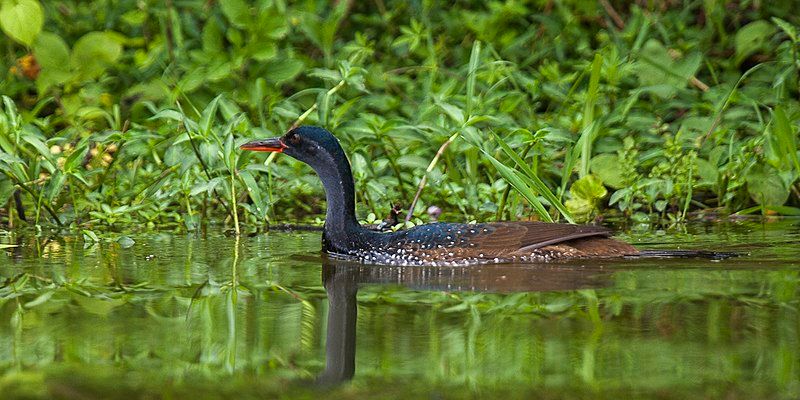
The African finfoot is a unique species of water bird, belonging to the family Heliornithidae. This species is found in many rivers and lakes in western, central, and southern Africa, making it a geographically widespread bird.
Its long, flexible legs and webbed feet make it well-adapted to its aquatic habitat. The African finfoot has a striking appearance. It has an elongated head and neck, and a colorful, glossy black plumage.
The wings and tail are speckled with white spots, which stand out against the deep black. Its long neck and bill, together with a large eye, give it a distinctive silhouette. The African finfoot is a mostly solitary species, rarely seen in large flocks.
It feeds mainly on aquatic insects, small fish, and aquatic plants. During the breeding season, the male and female will form a pair and build a nest near the water.
The female will lay two or three eggs, which the male will incubate while the female feeds. The African finfoot is a beautiful and interesting bird, and it is important to help protect its habitat so that it can continue to thrive in its natural environment.
| Kingdom | Animalia |
| Phylum | Chordata |
| Class | Aves |
| Order | Gruiformes |
| Family | Heliornithidae |
| Genus | Podica |
| Species | P. senegalensis |
7. Egyptian Plover
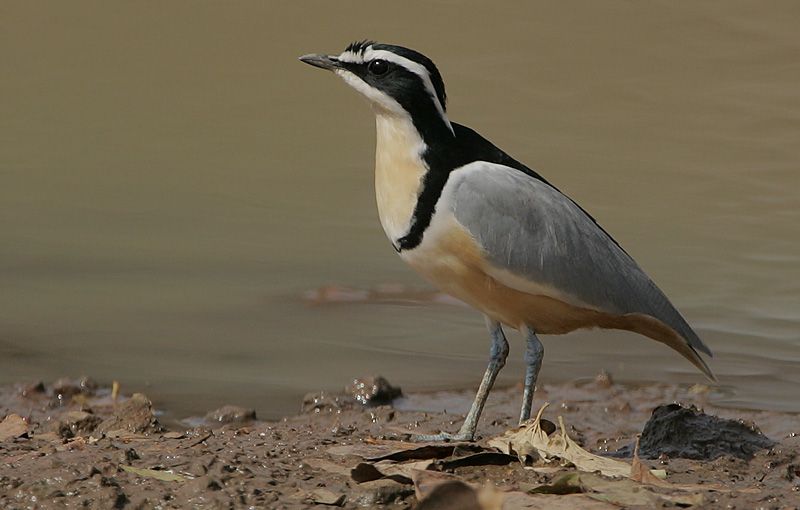
The Egyptian plover, also known as the crocodile bird, is a type of wader, meaning it is a bird that wades in shallow water looking for food. It is the only member of the genus Pluvianus, which is a scientific name for the species.
Previously, the bird was part of the pratincole and courser family, Glareolidae, but it is now its own family, called Pluvianidae. This is due to its unique characteristics, which set it apart from other wader species.
The Egyptian plover is known for its remarkable relationship with crocodiles, as it is able to feed from the crocodiles’ mouths without being harmed. This behavior has given it the nickname of the ‘crocodile bird’.
It is also known for its distinct coloration, which can vary from black, brown, and gray, to yellow and white. The Egyptian plover is an interesting species that has adapted to survive in a wide variety of habitats, from wetlands to deserts.
The species is not endangered, however, its population is declining due to habitat loss and human interference.
| Kingdom | Animalia |
| Phylum | Chordata |
| Class | Aves |
| Order | Charadriiformes |
| Family | Pluvianidae |
| Genus | Pluvianus |
| Species | P. aegyptius |
8. Mottled Spinetail
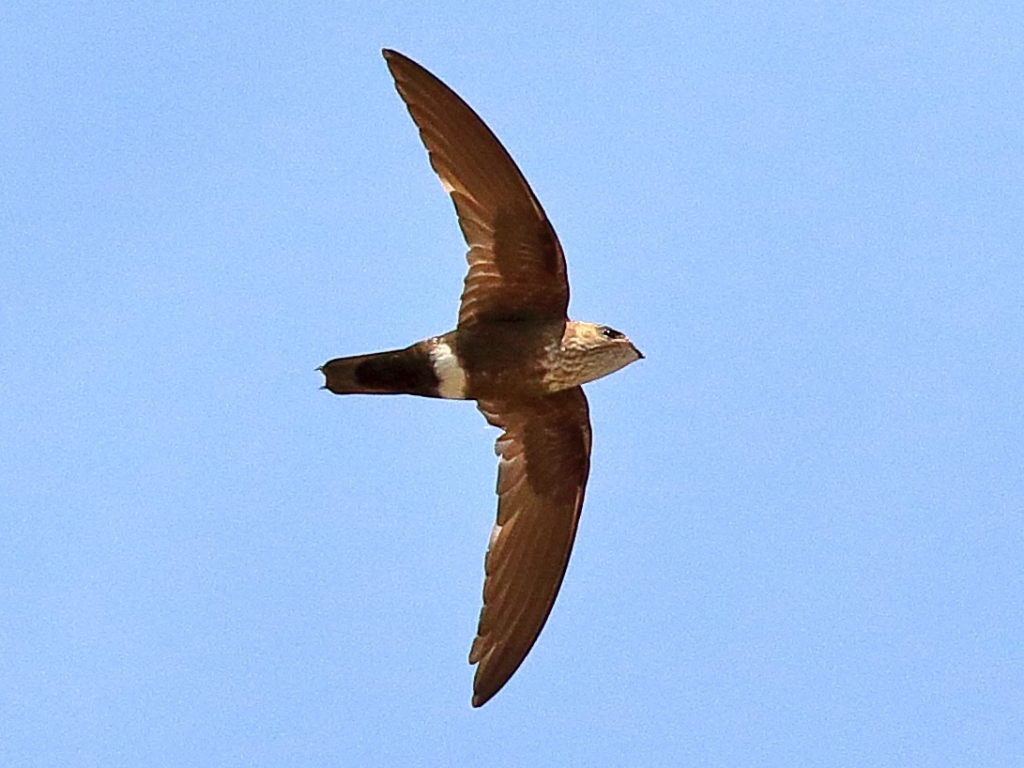
The mottled spinetail is a species of swift belonging to the family Apodidae. It is a relatively small bird, with a body length of approximately 12 cm. It has a mottled brown and black plumage, with a forked tail.
The mottled spinetail is found in a wide range of countries in central and western Africa.
These include Angola, Benin, Burkina Faso, Cameroon, Central African Republic, Republic of the Congo, Democratic Republic of the Congo, Ivory Coast, Equatorial Guinea, Gabon, Gambia, Ghana, Guinea, Guinea-Bissau, Liberia, Mali, Niger, Nigeria, Senegal, Sierra Leone, and Togo. The mottled spinetail inhabits a variety of habitats, ranging from scrub and savanna to woodland and mangroves.
It feeds primarily on flying insects, which it catches in mid-flight. It is a social species and is often seen in small flocks of up to ten birds.
The mottled spinetail is quite vocal, and its call is a high-pitched, trilled ‘tsik-tsik-tsik’.The mottled spinetail is not considered to be a threatened species, and its population is currently stable. It is listed as a species of least concern on the IUCN Red List.
| Kingdom | Animalia |
| Phylum | Chordata |
| Class | Aves |
| Clade | Strisores |
| Order | Apodiformes |
| Family | Apodidae |
| Genus | Telacanthura |
| Species | T. ussheri |
9. African Green Pigeon
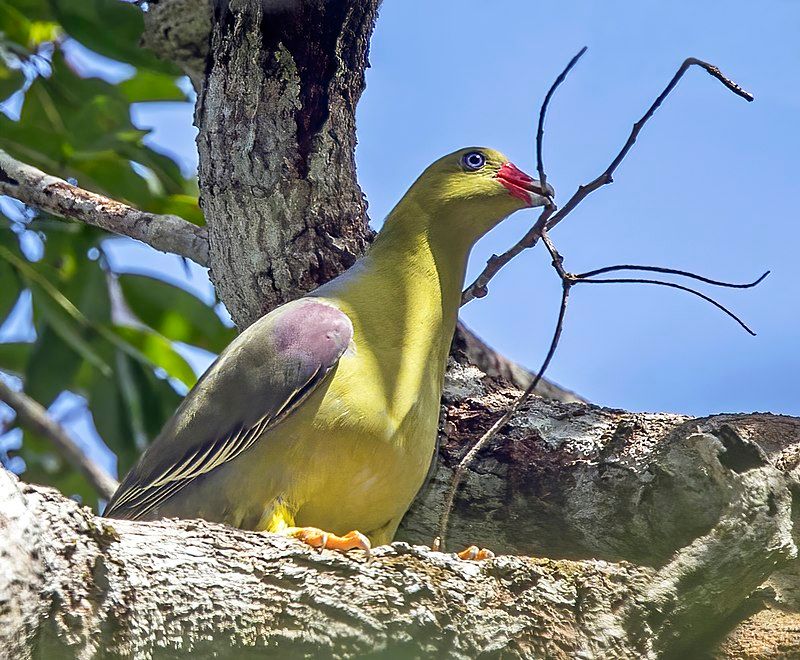
The African green pigeon is a species of bird that is part of the Columbidae family, which is also known as the pigeon and dove family. This species is one of five green pigeon species that can be found in the Afrotropic region, which includes parts of Sub-Saharan Africa.
African green pigeons have a very wide range in this region, with around 17 distinct races being recognized. In terms of physical features, the African green pigeon is typically a medium-sized bird with a blue-green plumage.
This bird species usually feeds on fruits and berries, but will also feed on insects, seeds, and grains.
The African green pigeon is a very important species in the region, as it helps to disperse the seeds of numerous plant species, and also serves as an important food source for various species of predators.
| Kingdom | Animalia |
| Phylum | Chordata |
| Class | Aves |
| Order | Columbiformes |
| Family | Columbidae |
| Genus | Treron |
| Species | T. calvus |
Conclusion
Birds are an integral part of the ecosystem in Timbuktu. They provide an essential source of food for local people and serve as a key indicator of environmental health.
The diversity of bird species in Timbuktu is vital to the overall health of the region, and it is important to ensure that the natural habitats of these birds are preserved and protected.